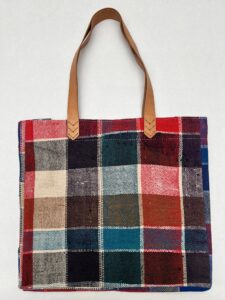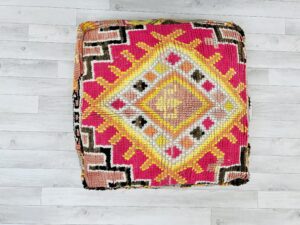Morocco, a country known for its rich cultural tapestry and stunning landscapes, has long been a crossroads of civilizations. Its culture reflects a blend of Berber, Arab, and European influences, all of which have contributed to the country’s unique identity. One of the most distinctive aspects of Moroccan culture is its tradition of crafting wool rugs—a practice that is both an art form and a cultural expression, deeply rooted in the history of the region.
The Cultural Mosaic of Morocco
Morocco’s cultural diversity is reflected in its language, cuisine, and customs. The indigenous Berbers, also known as the Amazigh, have lived in North Africa for thousands of years, predating the Arab expansion in the 7th century. Their traditions, language, and art have significantly influenced Moroccan culture. The Arab influence brought Islam to Morocco, which has shaped the country’s religious practices, architecture, and social norms. French and Spanish colonial periods also left their mark, particularly in urban centers like Casablanca, Rabat, and Tangier, where European-style architecture and French and Spanish languages are common. Despite these influences, Morocco has maintained a strong sense of its own identity, particularly in rural areas where traditional ways of life continue to thrive.
The History of Moroccan Wool Rugs
The history of wool rugs in Morocco is intertwined with the daily lives and cultural practices of the Berber people. These rugs, known as “kilims” or “Berber carpets,” have been handwoven by Berber women for centuries, using techniques passed down through generations. Each rug tells a story, often reflecting the weaver’s personal experiences, tribal identity, and the natural environment of Morocco.
Origins and Evolution
The tradition of weaving in Morocco dates back thousands of years, with the oldest known rugs believed to have been made as early as the Paleolithic era. Initially, rugs were functional items, used for warmth, bedding, and protection from the elements. Over time, they became more decorative, symbolizing status and wealth within communities. The materials used in Moroccan rugs—primarily wool—are sourced from the sheep that roam the Atlas Mountains and other rural areas. The wool is hand-spun and dyed using natural dyes made from plants, minerals, and even insects. The colors often carry symbolic meanings; for example, red might represent strength and protection, while blue could signify wisdom.
Regional Variations
Moroccan rugs vary significantly depending on the region where they are made. Each tribe has its own distinct patterns, colors, and weaving techniques. For instance:
• Beni Ourain Rugs: These are perhaps the most famous Moroccan rugs, characterized by their simple, geometric patterns on a cream or white background. They originate from the Beni Ourain tribes of the Middle Atlas Mountains and are known for their thick, plush texture.
• Azilal Rugs: From the Azilal province in the Atlas Mountains, these rugs are more colorful, often featuring a mix of geometric and abstract designs. They are typically made with a combination of wool and cotton, making them lighter than the Beni Ourain rugs.
• Boujad Rugs: These rugs come from the Boujad region in the Haouz area of Morocco and are known for their vibrant, warm colors—reds, oranges, and pinks—created using natural dyes. The patterns are often more free-form and less geometric than other Moroccan rugs.
• Taznakht Rugs: Hailing from the Ouarzazate region, Taznakht rugs are known for their intricate designs and vibrant colors, often incorporating multiple layers of patterns. They are woven using a combination of knotting and flatweaving techniques, making them both durable and visually striking.
Symbolism and Artistry
The motifs and patterns found in Moroccan rugs are rich in symbolism. Common symbols include diamonds, which represent protection against evil spirits; zigzags, symbolizing water and fertility; and crosses, often associated with the Berber belief in warding off evil. The artistry of these rugs is not just in their patterns, but also in the way they are made—each rug is unique, reflecting the individuality of the weaver. The process of making a Moroccan rug is labor-intensive and time-consuming. It can take weeks or even months to complete a single rug, depending on its size and complexity. The weaver works on a vertical loom, meticulously knotting each thread to create the desired pattern. The result is not just a functional item, but a piece of art that embodies the cultural heritage and personal expression of its maker.
Global Influence and Modern Appreciation
In recent years, Moroccan rugs have gained international acclaim for their beauty and craftsmanship. They have become a staple in interior design, appreciated for their versatility and the unique, handcrafted quality they bring to a space. Designers and homeowners alike are drawn to their organic patterns, rich textures, and the sense of history they carry. While they are now found in homes and galleries around the world, Moroccan rugs remain deeply rooted in the culture and traditions of Morocco. They are a testament to the enduring legacy of the Berber people and their ability to create art that resonates across time and borders.
Conclusion
The history of Moroccan wool rugs is a story of cultural resilience and artistic expression. These rugs are more than just decorative items—they are woven narratives that connect the past with the present, and local traditions with global appreciation. As they continue to be cherished by people around the world, Moroccan wool rugs remain a vibrant symbol of the country’s rich cultural heritage.




